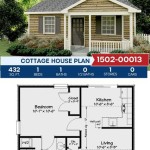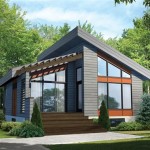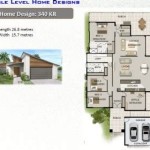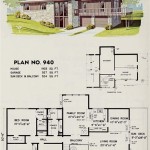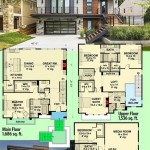Residential Home Floor Plans: A Blueprint for Your Dream Home
A residential home floor plan is a crucial element in the home building or remodeling process. It serves as a visual representation of the layout of a house, outlining the arrangement of rooms, walls, windows, doors, and other features. Floor plans provide a detailed blueprint for construction, ensuring that the final product meets the homeowner's specific needs and preferences. They are essential for communication between architects and contractors, as well as for obtaining building permits and securing financing.
Key Components of a Residential Home Floor Plan
A comprehensive residential home floor plan typically includes several essential components, each playing a crucial role in defining the house's functionality and aesthetics. These components may vary depending on the complexity of the project and the level of detail required. However, common elements include:
- Room Layout: Clearly defined boundaries of each room, indicating dimensions and placement within the overall structure. This includes bedrooms, bathrooms, kitchens, living rooms, and other areas.
- Walls and Doors: Detailed representation of interior and exterior walls, showcasing their placement, thickness, and any special construction details. This also includes the placement of windows and doors, highlighting their types and sizes.
- Fixtures and Appliances: Indication of the location of essential fixtures and appliances, such as sinks, toilets, stoves, refrigerators, and lighting fixtures. This allows for proper plumbing, electrical, and gas line installation.
- Dimensions and Scale: Accurate measurements for each room and feature, ensuring precise construction and efficient utilization of space.
- Notes and Symbols: Annotations explaining specific design elements, materials, finishes, and other relevant information. Symbols are used to represent specific features and components.
Benefits of Using Residential Home Floor Plans
Floor plans offer numerous advantages for homeowners, architects, and contractors throughout the home building and remodeling process. They serve as a valuable tool for envisioning the final product, making informed decisions, and minimizing potential errors during construction.
- Clear Communication: Floor plans provide a common visual language for all parties involved. They facilitate clear communication and understanding of design intent, reducing the risk of misinterpretations or misunderstandings.
- Efficient Space Planning: They enable homeowners to visualize the flow and functionality of their space. This allows for efficient allocation of space, maximizing usability and minimizing wasted areas.
- Cost-Effective Construction: By providing a detailed blueprint for construction, floor plans help minimize the need for costly on-site modifications or rework. This ensures a smooth and efficient building process.
- Design Flexibility: Floor plans allow for easy exploration of different design options and layout configurations. This facilitates a collaborative process, enabling homeowners to personalize their homes and achieve their desired aesthetic and functional outcomes.
- Accurate Material Procurement: Floor plans specify the required materials, including flooring, wall coverings, and fixtures. This allows for accurate material procurement and prevents overspending or shortages.
Types of Residential Home Floor Plans
Residential home floor plans can be categorized into different types to suit various needs and preferences. Understanding these types can assist homeowners in selecting the most suitable plan for their specific project.
- Single-Story Floor Plans: These plans feature all living areas on a single level, ideal for individuals or families who prefer easy accessibility and a more compact design.
- Two-Story Floor Plans: These plans include living areas on two levels, typically with bedrooms on the upper floor and living spaces on the lower level. They offer more space and often include features like stairs and landings.
- Open Floor Plans: These plans feature fewer internal walls, creating a more spacious and connected living experience. They often combine kitchen, dining, and living areas into a single open space.
- Custom Floor Plans: These plans are designed specifically to meet the unique needs and preferences of the homeowner, providing complete flexibility in layout, features, and aesthetics.
In conclusion, residential home floor plans serve as the foundational element for building a home that aligns with individual needs and aspirations. They provide a detailed blueprint for construction, ensuring clarity, efficiency, and a successful outcome. By understanding the key components, benefits, and types of floor plans, homeowners can make informed decisions to achieve their dream home aspirations.

Free Residential Home Floor Plans Evstudio

Floor Plan Of A Residential Care Home That Conforms To The Typology Scientific Diagram

Cottage House Plan With 3 Bedrooms And 2 5 Baths 5269

Example Image Residential Nursing Home Unit Plan Care Drawing House Plans

Est House Plans To Build Simple With Style Blog Eplans Com

Cape Cod House Plan With 3 Bedrooms And 2 5 Baths 7645

How To Read A Floor Plan With Dimensions Houseplans Blog Com

House Plands Big Floor Plan Large Images For Su Plans Американские дома Планы этажей Планировки

Two Story Craftsman House Plans Home Residential Floor

House Plans How To Design Your Home Plan

